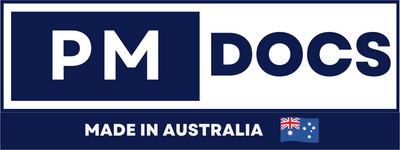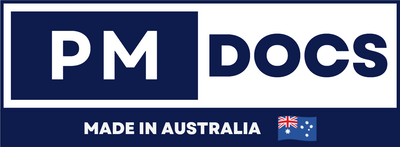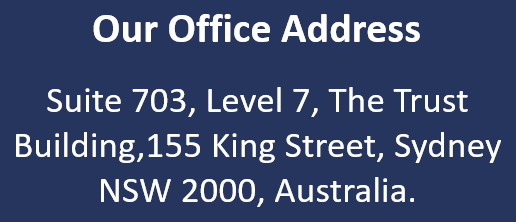ISO 20000
Introduction
ISO 20000 is an internationally recognized IT Service Management (ITSM) standard. It provides a framework for organizations to efficiently and effectively deliver IT services, ensuring customer satisfaction and continual improvement. By implementing ISO 20000, businesses can demonstrate their commitment to quality IT service delivery and gain a competitive advantage in the market. This blog will explore the key elements of ISO 20000 and discuss the benefits of adopting this standard for your organization.

What is the ISO 20000 International Standard for Service Management?
- The ISO 20000 International Standard for Service Management is a globally recognized standard that specifies the requirements for an organization to establish, implement, maintain, and continually improve its service management system. It is designed to help organizations effectively deliver quality IT services to meet customers' needs and expectations.
- ISO 20000 provides a framework for managing service quality and consistency. It is based on the IT Infrastructure Library (ITIL) best practices for IT service management and covers various aspects of service management, including service design, transition, delivery, and improvement.
- The standard defines a set of processes and controls organizations should implement to deliver reliable and efficient services. It also emphasizes the importance of continuous improvement, customer satisfaction, and aligning IT services with business objectives.
What Does ITSM Mean?
ITSM stands for Information Technology Service Management. It refers to managing and delivering IT services to meet an organization's needs. ITSM involves implementing and maintaining the policies, processes, and procedures that support IT services' effective utilization, delivery, and support. It typically includes activities such as incident management, problem management, change management, service level management, and service desk management. Overall, ITSM aims to ensure that IT services are aligned with business objectives and delivered efficiently and effectively.
How to Become ISO 20000 Certified?
To become ISO 20000 certified, follow these steps:
- Familiarize Yourself with the ISO 20000 Standard: First, understand the ISO 20000 standard and its requirements. This will help you comprehend the expectations and processes involved in achieving certification.
- Conduct a Gap Analysis: Assess your service management system against the ISO 20000 standard requirements. Identify the gaps that must be addressed to meet the standard's criteria.
- Develop an Implementation Plan: Create a plan that outlines the activities, resources, and timelines required to bridge the identified gaps and implement the necessary changes.
- Train Employees: Provide training to your staff to ensure they understand the ISO 20000 requirements and how their roles contribute to compliance.
- Establish Documentation: Develop and implement the required documentation, including policies, procedures, and work instructions that align with ISO 20000.
- Implement Service Management Processes: Implement or update your existing service management processes by the ISO 20000 standard.
- Monitor and Measure Performance: Establish performance measurement mechanisms to monitor the effectiveness of your service management system. This includes key performance indicators (KPIs) and regular internal audits.
- Assess Readiness: Conduct an internal audit to evaluate your organization's readiness for ISO 20000 certification. Address any non-conformities identified during the audit.
- Select a Certification Body: Choose an accredited certification body to conduct the external audit and issue the ISO 20000 certificate. Ensure they have experience in assessing service management systems.
- External Audit: The certification body will conduct an external audit to assess your organization's compliance with the ISO 20000 standard. This will involve reviewing your documentation, conducting interviews, and examining your implemented processes.
- Corrective Actions: Address any non-conformities identified during the external audit and implement corrective actions.
- Certification: Upon completing the external audit and resolving any non-conformities, you will receive the ISO 20000 certification. This certification is valid for a certain period, typically three years, and is subject to periodic audits for maintenance and re-certification.

What are the Fees Associated with Obtaining ISO 20000 Certification?
The fees associated with obtaining ISO 20000 certification can vary depending on various factors, such as the size and complexity of the organization, the certification body chosen, and the geographical location.
Typically, the certification process involves several stages, each with its associated costs. These can include:
- Gap Analysis: This initial step involves assessing the existing IT service management system against the requirements of the ISO 20000 standard. Depending on the scope of the assessment, this analysis can cost from a few hundred to a few thousand dollars.
- Documentation Development: Developing the necessary documentation, including policies, procedures, and work instructions, can require significant time and effort. Depending on the complexity and size of the organization, an organization may choose to develop these documents internally or seek external assistance, which can cost anywhere from a few thousand to tens of thousands of dollars.
- Training: Training employees on the ISO 20000 standard and its requirements is critical. Training costs vary depending on the number of employees, the chosen training provider, and the training format (e.g., in-person, online, etc.). On average, training costs can range from a few hundred to a few thousand dollars.
- Certification Audit: This is the official audit conducted by the certification body to assess the organization's conformity to ISO 20000 requirements. The audit costs can vary based on factors such as the organization's size, the number of sites involved, and the audit duration. Typically, the certification audit costs several thousand dollars.
- Surveillance Audits: Once certified, regular surveillance audits are conducted to ensure ongoing compliance with the standard. The frequency and cost of these audits depend on the certification body; they usually occur annually or biannually and can cost several thousand dollars per audit.

Why Do You Need ISO 20000 Certification?
ISO 20000 certification is a globally recognized standard for IT service management. It provides a set of best practices and guidelines to ensure the effective and efficient delivery of IT services to meet the organization's and its customers' needs.
There are several reasons why organizations may seek ISO 20000 certification:
- Improve Service Quality: ISO 20000 certification helps organizations establish and maintain effective service management processes. By implementing these processes, organizations can improve the quality of their IT services and ensure that they meet their customers' needs and expectations.
- Enhance Customer Satisfaction: By adhering to the ISO 20000 standard, organizations can demonstrate their commitment to delivering high-quality IT services. This can enhance customer satisfaction and build trust in the organization's ability to meet customer requirements.
- Increase Business Efficiency: ISO 20000 promotes the adoption of efficient processes and the effective use of resources. By implementing these practices, organizations can streamline their IT service management processes, reduce costs, and increase overall business efficiency.
- Enable Continuous Improvement: ISO 20000 requires organizations to establish a culture of continual improvement. By regularly monitoring and measuring service performance and customer satisfaction, organizations can identify areas for improvement and implement corrective actions to enhance their IT service management capabilities.
- Gain Competitive Advantage: ISO 20000 certification is a globally recognized standard demonstrating an organization's commitment to delivering high-quality IT services. This can give organizations a competitive edge by differentiating them from competitors and attracting customers who prioritize working with certified service providers.
- Ensure Regulatory Compliance: ISO 20000 helps organizations align their IT service management processes with regulatory requirements. Organizations can avoid penalties, legal issues, and reputational damage by complying with these regulations.
What are The ISO 20000 Clauses?
The ISO 20000 standard consists of several clauses that outline the requirements for an organization's service management system. The clauses are as follows:
- Scope: This clause defines the scope of the organization's service management system and specifies the requirements that must be fulfilled.
- Normative References: References to other relevant standards and documents necessary for implementing ISO 20000 are provided.
- Terms and Definitions: This clause defines the key terms used throughout the standard to ensure common understanding.
- Service Management System General Requirements: This clause outlines the general requirements for establishing, implementing, maintaining, and continually improving a service management system.
- Design and Transition of New Services: This clause focuses on the activities required to design, transition, and release new or changed services.
- Service Delivery Processes: These processes are related to the actual delivery of the services and include incident management, problem management, service request fulfillment, and more.
- Relationship Processes: This clause covers processes vital for maintaining good relationships between the service provider and customers, such as service level management, supplier management, and business relationship management.
- Resolution Processes: These processes handle service-related issues, including event management, request fulfillment, and access management.
- Control Processes: This clause establishes control mechanisms and processes to ensure consistent service delivery. It includes configuration management, change management, and release and deployment management.
- Continual Improvement: This final clause emphasizes the importance of continually improving the effectiveness and efficiency of the service management system.

What are ISO 20000 Controls?
ISO 20000 controls refer to the requirements and guidelines outlined in the ISO/IEC 20000 standard for IT service management. These controls are designed to ensure the effective delivery of high-quality IT services in alignment with business objectives.
ISO 20000 controls cover various aspects of IT service management, including service design, service transition, service delivery, and relationship management. These controls provide a framework for organizations to establish and maintain a reliable and efficient IT service management system.
Some examples of ISO 20000 controls include:
- Service Level Management: involves establishing and maintaining appropriate service level agreements (SLAs) with customers and monitoring service performance against those SLAs.
- Incident Management: involves implementing processes to identify, record, and resolve incidents promptly while minimizing the impact on service quality.
- Change Management: involves managing changes to IT services to ensure that they are appropriately evaluated, tested, and communicated to all stakeholders to minimize risks and disruptions.
- Problem Management: Identifying and addressing the root causes of recurring incidents to prevent future occurrences and improve service efficiency.
- Configuration Management: Establishing a structured approach to managing the configuration of IT assets and ensuring accurate and up-to-date information is available.
- Supplier Management: Establishing and maintaining effective relationships with suppliers, ensuring their performance meets agreed-upon requirements.
How Much Time Is Required to Obtain ISO 20000 Certification?
The time required to obtain ISO 20000 certification can vary depending on several factors. These factors include the organization's size and complexity, the preparation level already in place, and the resources available for implementation.
Obtaining ISO 20000 certification may take around 6 to 12 months. It involves several key steps, such as:
- Gap Analysis: This involves conducting an initial assessment to identify the gaps between the organization's current IT service management practices and the requirements of the ISO 20000 standard.
- Implementation Planning: Once the gaps are identified, a detailed plan is created to address and close these gaps. This plan defines the processes, policies, and procedures required for compliance.
- Implementation: This phase involves executing the implementation plan, which may include training staff, updating documentation, and implementing new processes and procedures.
- Internal Audit: An internal audit assesses the organization's readiness for the certification audit. This audit helps identify non-conformities and allows corrective actions to be taken before the certification audit.
- Certification Audit: This is conducted by an external certification body. They assess the organization's compliance with the ISO 20000 standard and determine if certification can be granted.












